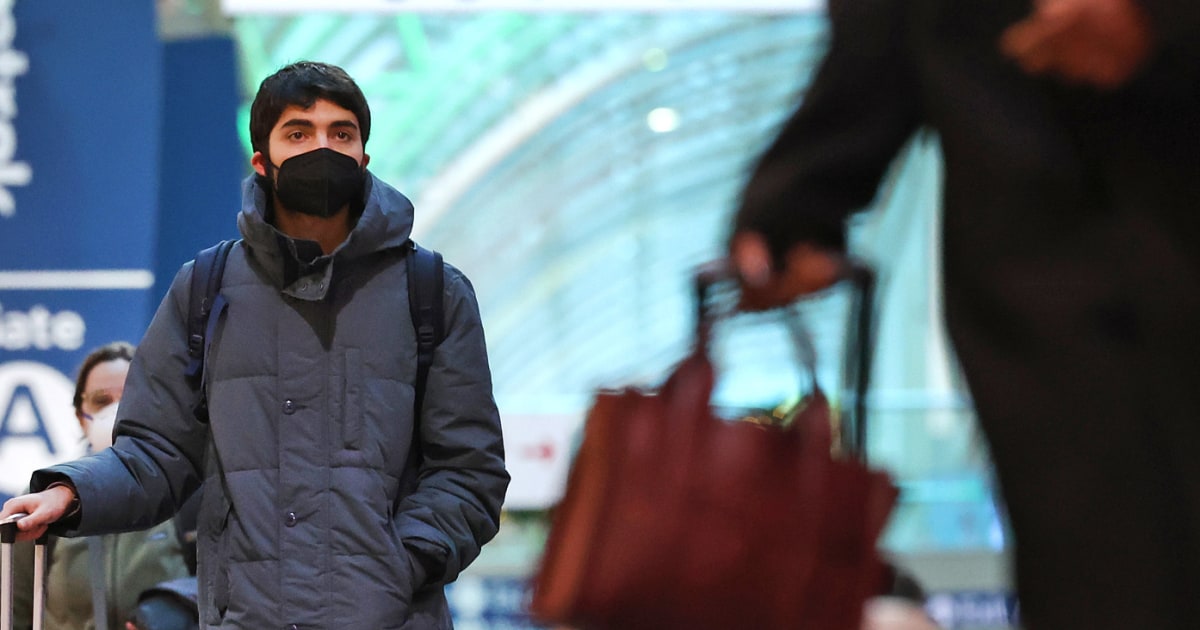While a large number of seasonal respiratory illnesses circulate, COVID-19 is the virus that continues to send the most people to the hospital, the Centers for Disease Control and Prevention (CDC) reported Friday.
“COVID-19 remains the leading cause of new hospitalizations and deaths from respiratory viruses,” CDC Director Dr. Mandy Cohen said at a news conference.
The virus is responsible for about 15,000 hospitalizations and 1,000 deaths each week, he said.
Although the CDC no longer tracks national case numbers, sampling that looks for the virus in wastewater is how they are measuring COVID-19 activity across the country. According to the CDC’s wastewater dashboard, viral activity is increasing in the country and is highest in the Midwest.
That data from the Midwest could be a sign of what’s to come this winter as temperatures drop.
(They recommend reviewing COVID-19 home tests because their expiration date has been extended)
This isn’t exactly surprising given the climate, according to Tara Smith, a professor of epidemiology at Kent State University in Ohio.
“What we have seen in the last two years is that in the south the wave starts earlier because of the warm weather because they are locked in air conditioning, and when the weather is cold the wave starts earlier in the northern states because we are stuck in inside because of the cold, miserable weather outside,” says Smith.
In addition to the cold weather, as holiday travel increases, experts predict it will be accompanied by an increase in COVID-19 infections.
The latest on variants
A COVID variant called HV.1 remains the predominant strain in the United States, at least through Nov. 25, and accounts for about 32% of new cases, according to the CDC.
(The death of actor Matthew Perry unleashes the conspiracy theories of the anti-vaccine movement)
However, there are signs that other variants may be gaining momentum. The BA.2.86 variant, which was first detected during the summer, tripled in prevalence during the week ending November 25 compared to the previous week: from 3% of new cases to 9%.
The variant caught the attention of experts during the summer due to its high number of mutations.
In November, the World Health Organization reclassified BA.2.86 as a variant of concern, rather than a variant under monitoringalthough he maintained that the public health risk of the variant remains low globally.
“It has a growth advantage, but this is what we expect from variants classified as variants of concern,” Maria Van Kerkhove, WHO technical director focused on COVID-19, explained at a press conference this week. “In terms of severity, we do not see a change in the disease profile of people infected with BA.2.86 and its sublineages, including JN.1,” she said, referring to a descendant of the strain that was recently identified.
Ali Mokdad, director of population health strategy at the University of Washington, noted that while it may be alarming to see new variants take hold in the winter, he’s not too worried about what he’s seen so far.
(Mask use may be recommended again if COVID-19 cases increase, according to Dr. Fauci)
“None of the variants we are looking at now are of concern,” he said. “All of them are omicron variants and we haven’t seen anything that’s scary and makes us say, ‘Oh, wait a second, we have to be careful here.’”
What is concerning, Mokdad said, is that very few Americans have received the updated COVID-19 vaccine. Currently, only 16% of adults in the US have received the vaccine, according to the CDC.
Does the vaccine protect against newer variants?
“There’s always a concern that something could emerge that could bypass vaccine- or infection-induced immunity, but I don’t think we’ve seen that yet,” Kent State’s Smith said.
The updated vaccine, which targets the omicron subvariant XBB.1.5, increases the antibody response to circulating variants, including HV.1 and JN.1, according to a study published Monday by researchers at Columbia University.
It is critical that those who are eligible for an updated COVID vaccine receive it, Smith said, as the vaccines have been effective in resisting the most serious consequences of the virus.

